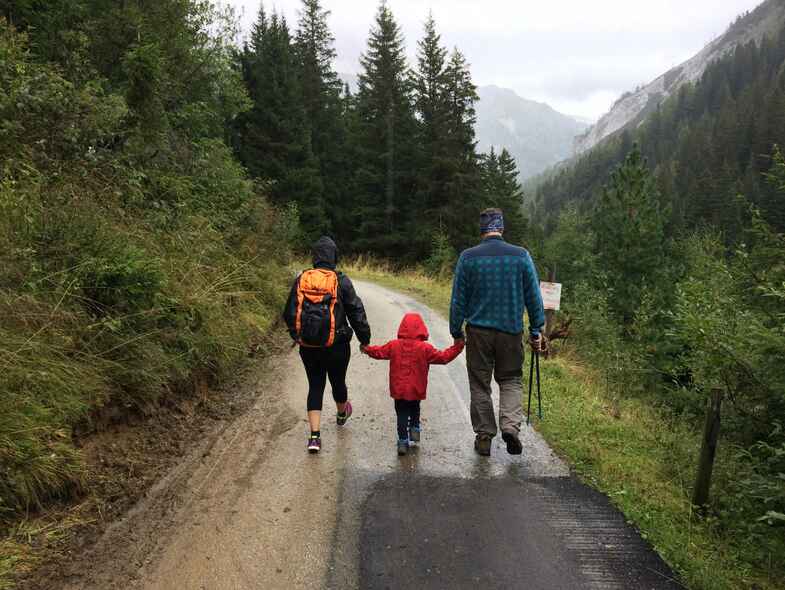Photography by Alberto Casetta
New to hiking but not sure where to start? Here are some essential hiking tips to help you hit the trails with confidence.

Photography by Austin Ban
Plan Ahead
Like any road trip or holiday, planning is key, and the same applies to hiking. Start by choosing a trail suitable for a beginner. While you might think your fitness levels are above average, you shouldn’t underestimate an ‘easy’ hiking trail, so opt for a route that’s less challenging with little elevation, then work your way up to a ‘moderate’ or ‘hard’ trail over time as you build confidence. Sometimes there can be multiple routes heading to the same mountain peak or destination, identified by colour or name, so familiarise yourself with your chosen trail as you don’t want to accidentally take the wrong turn and end up on a harder route! While maps to the most established walking trails will be available online, you shouldn’t rely on mobile reception or your phone’s battery to navigate your way, so always take a printed map as a backup. Remember, if you do get lost, just turn around and go back the way you came. Finally, before you set off, always check the weather forecast and tell someone where you’re going and when you plan to be back.
Clothing
When it comes to hiking clothes, the key to comfort is layering – it’s all about adding and removing pieces of clothing as and when your body temperature changes. Good hiking layers are moisture-wicking, typically polyester, nylon, or wool. Avoid cotton and other heavy fabrics. For cooler days, your base layer should be a good quality long-sleeve thermal top, then add more layers – a non-thermal long-sleeve top, a fleece, and finally a light waterproof jacket that acts like a shell and stops wind and rain from penetrating through. If it’s winter, you should always take a beanie and some gloves too. In the peak of summer, start with a hat and a t-shirt, but put a jumper and a thin waterproof jacket in your backpack. In the fringe seasons like spring and autumn, always take an extra layer or two to keep you warm in case of a turn in the weather. If you’re hiking in the mountains, the weather can change very quickly, so always plan for the worst.
"The most important rule of hiking is to leave no trace. Take your rubbish home with you and stick to the designated trails to avoid damaging the environment."


Photography by Daiga Ellaby Photography by Kitera Dent
Footwear
When shopping for good quality hiking shoes, aim for comfort, protection and durability. A good hiking shoe needs to keep your feet dry, supported, and protected from the elements, especially terrain that is uneven and rocky, so opt for a shoe with a thick sole. Before you go hiking, try to wear your new shoes once or twice at home to avoid blisters on your first hike. Always take a spare pair of socks in your backpack in case your socks get wet or if you need an extra layer to prevent rubbing or discomfort.
Food And Water
When going out on a hike, whether it’s for an hour or a full day, take sufficient water to keep yourself hydrated. If you’re out hiking for a couple of hours, it’s worth packing yourself some high-energy snacks in case you get hungry, and if you’re out for a full day, then pack lunch as well. Remember, you’ll be burning more energy than usual, even if it’s a short walk, so you should stop for a drink and snack regularly. Be sure to have spare snacks in case of an emergency.
Important Extras
When you go hiking you’ll also need a backpack to hold the important items you’ll need to take with you. When buying a pack, look for something with thick, comfortable straps and a hip belt that will transfer the weight off your shoulders. As well as the food, clothing and navigation tools that will go into your pack, you should also take a first aid kit, sun protection, tissues or toilet paper in case you need to go to the bathroom, and a torch or headlamp with spare batteries.

Photography by Ethan Sykes
Trail Etiquette
The most important rule of hiking is to leave no trace. Take your rubbish home with you and stick to the designated trails to avoid damaging the environment. The only time you should leave the trail is if you need to go to the bathroom – the best practice is to go 50-100 metres away from any trail, campsite, or water source. Finally, be friendly to other hikers, be kind to the wildlife, and have a great time in nature!

Photography by Andrew Ly

Photography by Florida Guidebook
Enjoy this complimentary magazine, become inspired and find endless possibilities for your own inspired living.
To read the e-brochure click here.





